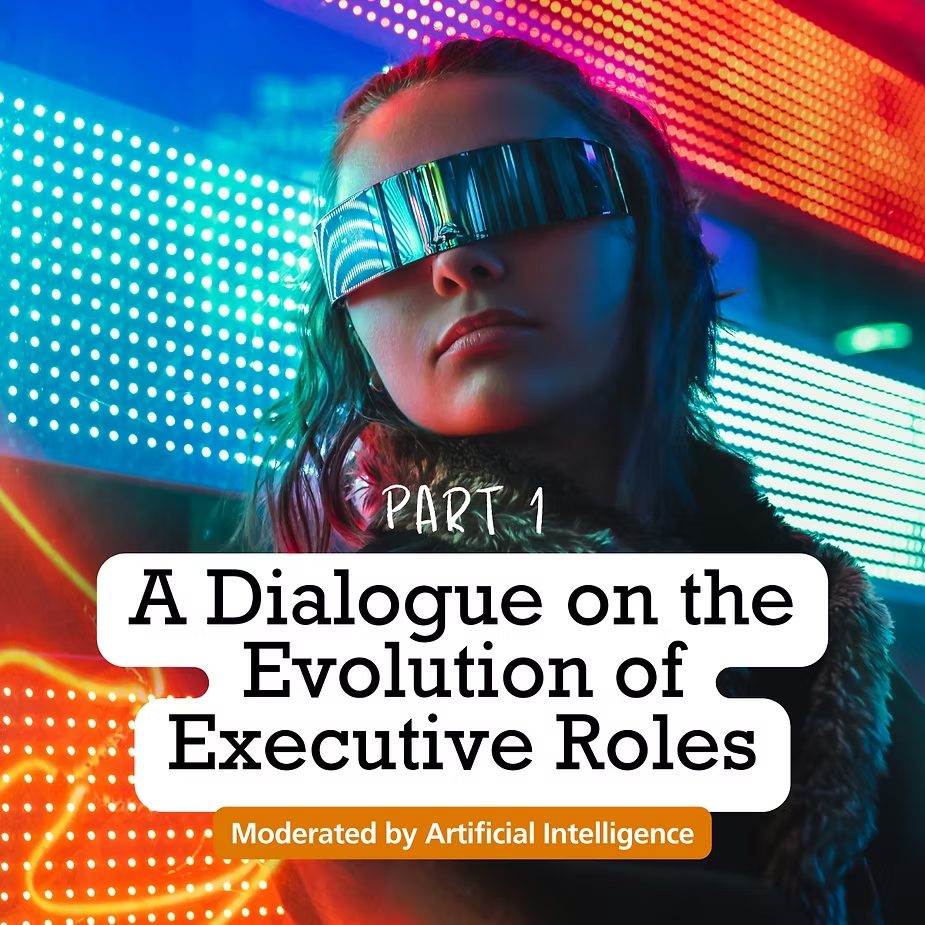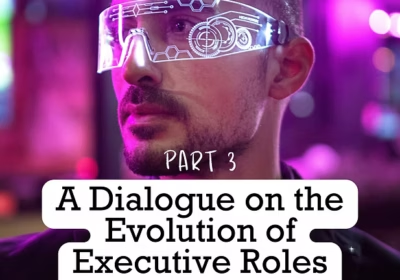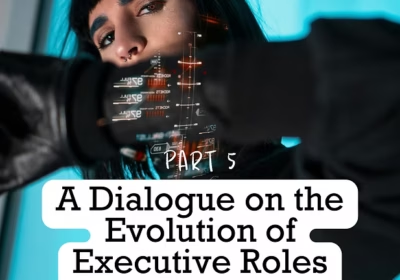Between Tech and Leadership: A Dialogue on the Evolution of Executive Roles


In a world of constant change, the ability to adapt and self-reflect is not just desirable for leaders but essential. But how does one transition from being a specialized expert to a leadership position that combines both technical and entrepreneurial visions?
To delve into this question, we’ve conducted an extraordinary conversation: an interview not created in the traditional manner. Two renowned entrepreneurs and executives, Philipp Deutscher and Jan Hossfeld, share their insights and experiences in an interview moderated by Artificial Intelligence.
This post marks the beginning of a five-part series offering insights into the development of leadership skills, the importance of self-understanding, and the challenges of modern leadership roles.
Self-Understanding / Self-Awareness
1. How did you develop your self-understanding as a leader, and what role does self-awareness play in your transformation from developer to executive (C-Level)?
Philipp Deutscher: “Inner drive plays a very significant role. The constant curiosity to understand the world. There’s a lot of trial and error involved. A lot of reading, learning, trying out, falling flat on your face, and then learning from it and moving on.
“In my first years as a software developer, I learned that I perform best when my environment offers a healthy mix of autonomy, self-organization, a reasonable degree of creative freedom, while simultaneously having high expectations for achieving goals.”
Philipp Deutscher: „Therefore, from day one as a leader, my drive has been to provide my employees and teams with an environment in which they can deliver their best performance. This demand continues to drive me.”
Jan Hossfeld: “Self-awareness, the ability to reflect, is the essential skill on the path from being a specialist to a leader. Only through constant reflection of experiences is it possible to advance one’s own improvement process. As a leader, one rarely has people who can provide feedback on development from a ‘more experienced’ position. This changes the methodology; you can only work with like-minded people. From this background, my two most important pieces of advice emerge: Journaling and mentoring. The former is one’s own reflection, best done daily, with regular re-reading after some time. I do this as part of my annual review, for example. The latter is working with someone who acts not from a teacher’s position but as a companion. Mentors are valuable because they act not as trainers but as facilitators. They are there to help you in your search for insights, not to do it for you.”
2. What strategies do you recommend for identifying strengths and areas for improvement, and bridging the gap to your ideal role?
Philipp Deutscher: “Look for leaders or mentors who can provide you with transparent and constructive feedback and reflect the impact of your behavior on others. Be ready to learn from it. Every day. Always. Try to understand the perspectives and logics of those who are a few steps ahead of you. The combination of continuous learning, regular feedback loops, and adjustments always leads to a better result. Sometimes it happens quickly, and sometimes it takes longer. But the results come. Trust the process.”
Jan Hossfeld: “As mentioned before, feedback is essential. Since it no longer comes from a superior as before, it can only come from two directions: From your own team in regular 1-on-1s, or from peers and mentors in mastermind groups or mentoring. The exciting part is that over time, a picture emerges that allows for targeted work on oneself. What is also helpful is integrating models into one’s own ‘toolbox’. Insights or DISC are examples of how self-analysis also provides tools to better describe one’s own strengths, weaknesses, and needs – and to do the same for others.”
Understanding Roles
1. How do you define the role of an executive in terms of responsibilities and expectations?
Philipp Deutscher: “Tech and business speak different languages and have different perspectives. Building bridges and translating, mediating, and negotiating between the two sides is important to develop synergies and pull together. A pure techie will have difficulties involving the business side in solution finding. A CTO without deep technical expertise will not be able to find the right compromises for the sake of the matter. It’s not always about the best technical solution, but also.”
“The danger is that of superhero leadership. This must be avoided at all costs, as it only looks like leadership. In reality, it is the continuation of the specialist role with a new title, but without the central aspect of leadership, namely enabling and promoting the development of others.”
2. How do you believe the understanding of the role of a CTO differs from that of a traditional developer?
Philipp Deutscher: “First, it’s important to understand that not every CTO role is the same. It varies from company to company. A startup CTO will be much more hands-on than an enterprise CTO, who is likely to be more strategic. Generally, the importance of technical decisions and involvement in technical details continues to decrease. Other areas of responsibility are added. This is normal and expected, as it should not be the CTO’s job to solve the technical problems of the developers. I like to compare it to a coach/manager of a professional sports team: It’s important to have the right squad, set up the team correctly, have a perfect playing field and the right training conditions, organize the training, develop youth players, and so on. And it’s the team’s task and responsibility to implement this on the pitch.”
Jan Hossfeld: “In the field of impact. Remember Dirty Dancing – ‘this is my dance area, this is yours’. The same applies to this role change. It’s no longer about implementing something as well as possible, i.e., being efficient. It’s now about defining what the right thing is to implement, and on which playing field, for example, the general technical guidelines. The understanding of the role thus shifts from efficiency as a standard to effectiveness.”
Different Interpretations of the CTO Role
1. Can you provide examples of different interpretations of the CTO role based on company requirements and personality structures?
Philipp Deutscher: “The role changes with the size and maturity of the company. A CTO of a 5-person startup will likely be much more involved in development than a CTO of a corporation with 400 developers. It’s not uncommon for a startup CTO to still be more of a developer than a leader and to have less pronounced leadership skills/experience. On the other hand, a CTO of a large corporation must deal much more with the various interests in his environment and manage and negotiate them.”
Jan Hossfeld: “I can only answer this question from the experience of my own company. My CTO faces two important challenges: First, to create the roles, structures, and processes so that development can deliver as error-free and reproducibly constant results as possible. This is important because the forecast, for example, about the projects of a year or a customer, is important. Any error here means that other projects are postponed. Of course, everyone wants to avoid this. Secondly, it’s important that he defines the playing field and involves the team. His most important competence is to set a framework within which others can take responsibility for clearly defined goals and results.”
2. How do you adjust your leadership strategy to meet the diverse expectations of an executive?
Philipp Deutscher: “I believe leadership must always be somewhat situational to a certain extent, and special situations require special solutions. This applies to challenges on the business side as well as to conflict situations with employees or peers. Dogmatic action is rarely helpful in these situations.”
Jan Hossfeld: “I am not a specialist myself, and I see that as an advantage. The danger of finding technical questions particularly interesting and losing myself in them is thus not given. At the same time, a leadership role means that you must be able to talk to many different people. This common language, established through a good basic understanding of the work, is a success factor. I then balance this with trust, responsibility, and control. Trust means that I fundamentally trust the people in my company and count on their ability to learn. The fact that someone cannot do something yet is thus no argument against delegating this area – as long as the person is then specifically supported. I try to share responsibility where possible. Here, areas of responsibility are much more important than tasks. One way to this is to capture the work in the company in abstract roles, regardless of the people. This prevents the often present mindset that a specific person is identical with a role because with this thinking, the transfer of roles becomes impossible. Control is the counterpart to trust – because in the end, the executive is responsible. It’s best to define the criteria for successful work in advance with the employee and then find ways to get the status regularly without much effort. 1-on-1s and standardized reportings are helpful.”
These in-depth insights into the transformation and strategies of successful executives are just the beginning of our series.
The continuation of this fascinating dialogue can be found in a week on Jan Hossfeld’s blog. There, we will delve deeper into the topics of leadership, management, culture, and the forward-looking design of companies. Don’t miss how our experts bridge the gap between personal development and sustainable success in dynamic business environments.
Related Posts
Why Leadership, Strategy, and Culture Matter More for a CTO…
Suddenly finding your company without a CTO is a challenge…
In a world of constant change, the ability to adapt…
In a world of constant change, the ability to adapt…



